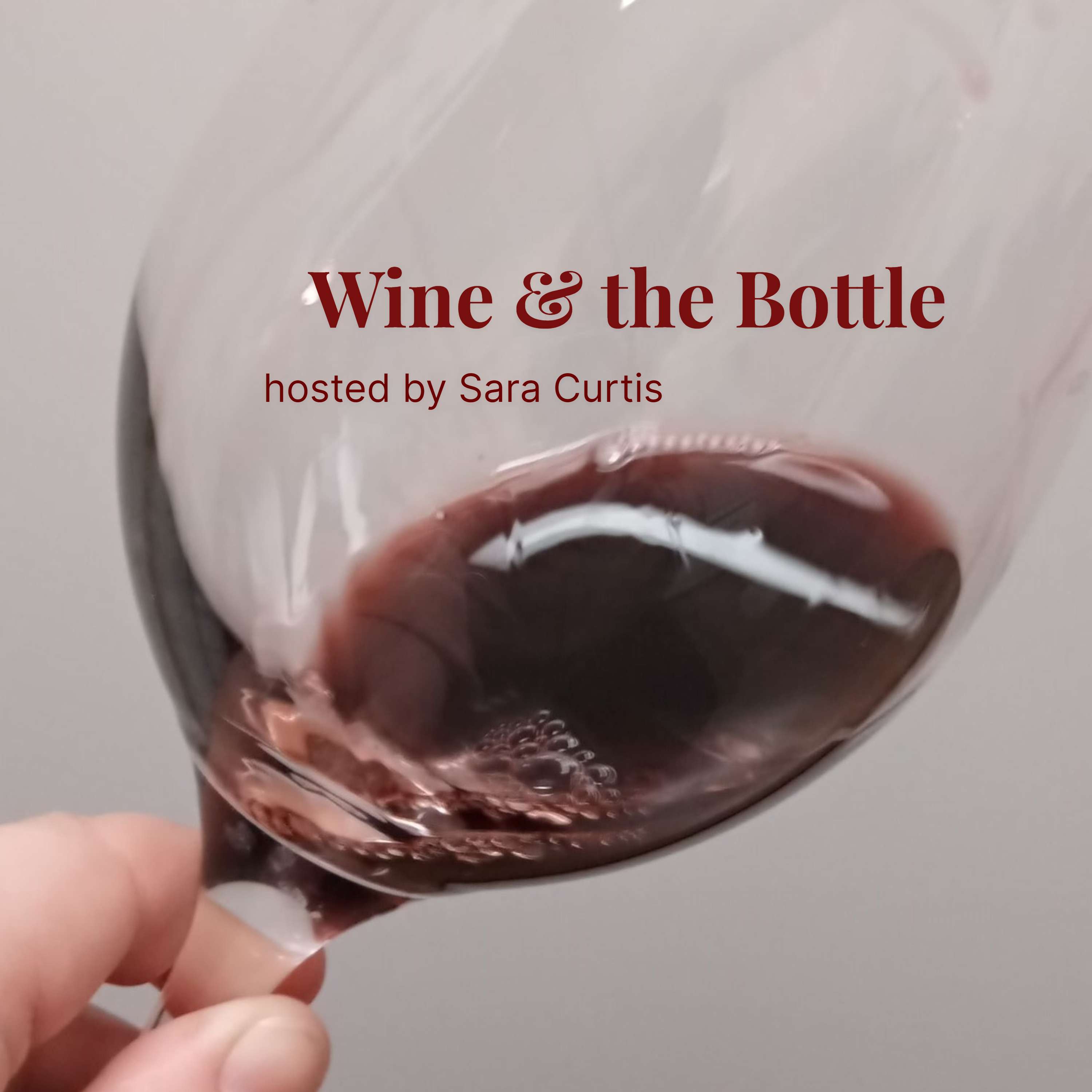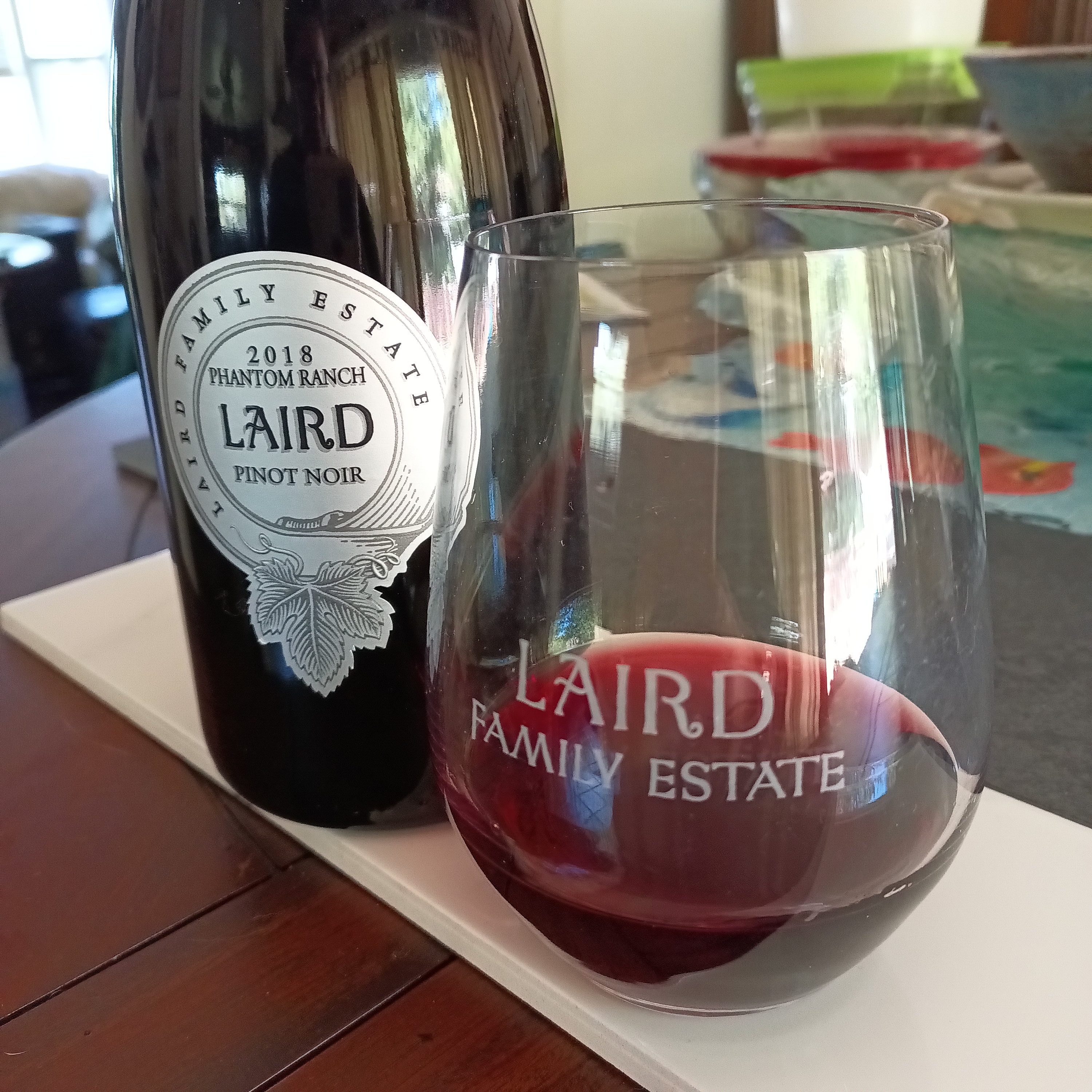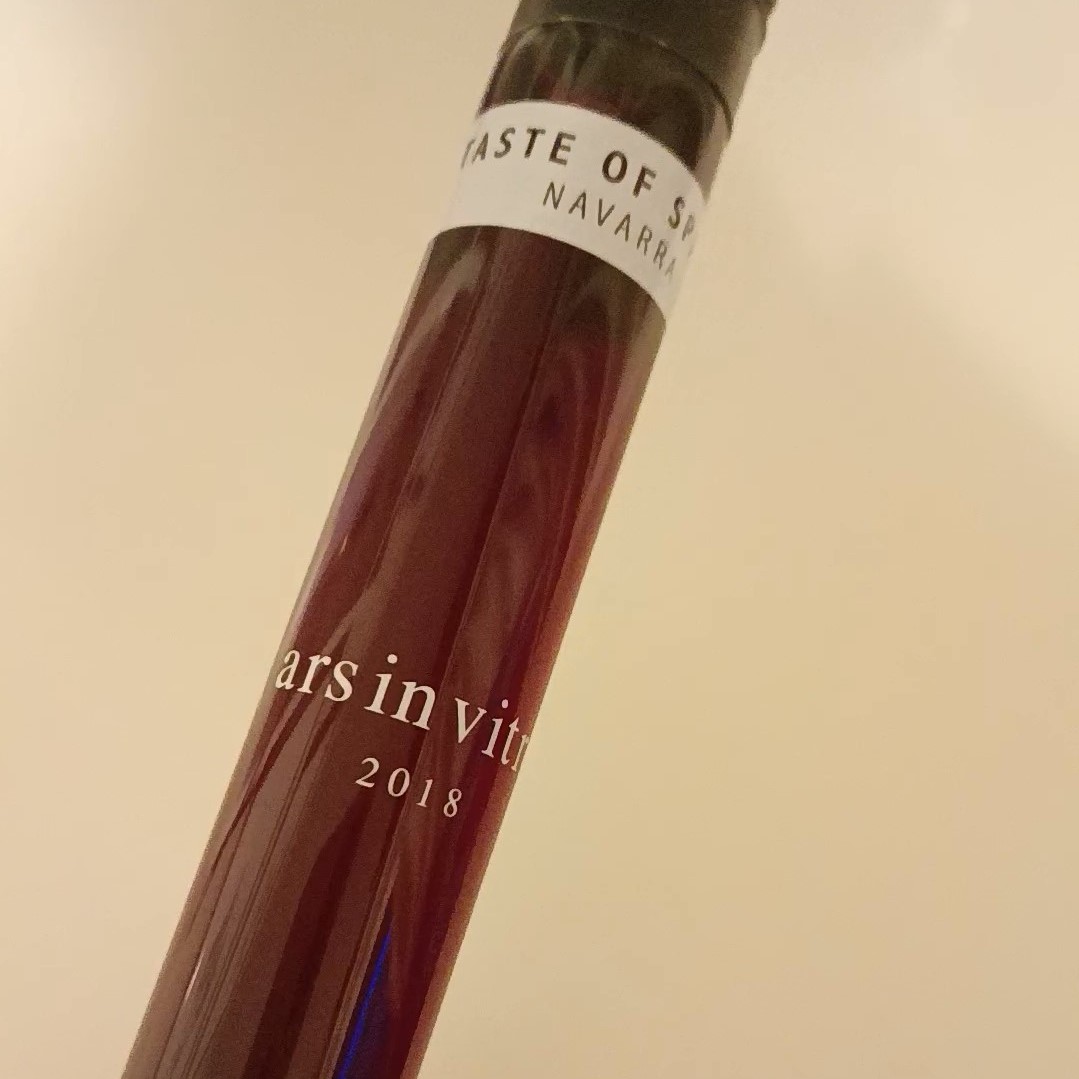Episode Transcript
Speaker 0 00:00:03 Hello enthusiasts and welcome to another episode of Wine and the Bottle. I'm your host, Sarah, and this is the wine show for enthusiasts of all levels where we go off the pages of the textbook into the greater world of wine. Now, today I wanted to take us to some place that I've been thinking about for a very long time to taste a wine that I haven't gotten outta my head since I first tasted it about two years ago. And that is so Tarn. So Tarn is a region in France, in Bordeaux. It's a sub Appalachian known for its sweet dessert wine. And so Tarn, along with its neighboring Barack, produced some of the best sweet dessert wine in the world, some of the most renowned, so much so that this style of wine that is produced there is known around the world as Soarin style wine.
Speaker 0 00:01:09 It is mimicked throughout the world, but it's always different because the climate and the techniques used in Soarin are so unique that it can only produce that style of wine in that region of the world. So question number one, what is Soter style wine? Well, it is a white wine, usually based out of seon and sometimes sauvignon Blanc. And the grapes on the vine as it gets towards harvest time are allowed to develop a mold called ritu. It's also known as noble rot. It does sound kind of gross to think that they're letting mold grow on these grapes, but it can only grow in specific climate where it's warm enough during the day to stop the progression of the mold. But it's cool enough at night to allow the mold to develop. And what this noble rot does is it pierces the thin skin of the grape.
Speaker 0 00:02:21 Both Seon and Sauvignon blanc are fairly thin, thin-skinned grapes. So the filaments pierce into the skin of the grape and during the warm afternoons, water evaporates out of the grape and resonates them, shriveling it into a more concentrated solution of juice and sugar and acid. So all of the compounds are heightened. Yes, you do get less juice out of this process because the water has mostly evaporated out, but what you get is ultra concentrated flavors, sugars, acid, and it usually turns out very well balanced, but it can only occur if this ritu is allowed to develop evenly. In order to get this kind of climate, you have to have those warm, sunny afternoons and cool evenings. You have to have humidity, mist, fog, cloud cover, and that is often achieved by being close to a water source. And so Taryn and Barak happen to be at the cross section of two rivers, and those two rivers provide that moisture and humidity and the forests surrounding the area help pull that humidity and moisture into the air and help keep it in the air.
Speaker 0 00:03:59 And that helps the rot to grow on the grapes. Now it has to develop evenly, and if it doesn't, it becomes quite the pain because every berry is selected by hand to make sure it has the perfect amount of rocked, the perfect amount of raisin nation. So often berries are picked individually instead of by cluster. And harvest can take many, many weeks as they make 4, 5, 6, 10 passes through the vineyard to select the perfect grapes. So it's not easy and you have to have the perfect climate, the right temperatures, the right conditions. So maybe it doesn't happen every year. And the specialty houses in Tnn that focus mainly on sweet tn style style wine, sometimes they won't produce in a year. Sometimes they'll say We're not making any of the sot Tarn dessert wine this year because you have to have the perfect conditions. That perfect condition is why you won't find so Tarn style in every region of the world.
Speaker 0 00:05:21 There is some produced in California, but it's very specific where it can be ground and is often found in the Sonoma Valley. But if you look at all of those houses in Sothen, all of those wineries in Soter that specialize in sweet wine only one is a premier crew. Superior Class A from 1855, Chateau Deke and a Chateau Dkm wine can go for hundreds of dollars per bottle. A single ounce will cost you upwards of $50. It's hard to come by and it's expensive because it is so limited in production. This is a 375 milliliter bottle of Jiro, which is another highly rated wine from Sothen. This dessert wine is often sold as 375 milliliter or half bottle because it is so hard to come by. But this little bottle can cost just as much as a full bottle of wine elsewhere. Some of these Soter wineries also produced dry wines and it was Chateau Dkm that started the trend of creating a white wine and using the first initial of the name of the winery as the name of the wine.
Speaker 0 00:06:59 So their white wine blend, which is mainly semi, it's very full and round, delicious, lots of citrus, some floral, less acidity than you would find in a Sauvignon blanc. It's called <unk>, which is French for the letter y che starts with the letter Y. That trend continued and even chat produces a dry white wine called ge. Okay, so we've talked about what happens in the vineyard and how the berries get to that concentrated state. Well, what happens once they get to the winery? Do they wash the mold off? No <laugh> and yeah, that sounds kind of gross, but it actually helps influence this unique specific style of wine. There's flavors involved that are actually kind of desirable, so the berries are taken and pressed and the entirety of the must. So the grape juice plus the skins is left to sit in oak barrels to ferment. And because of the high sugar content and because of the mold, sometimes fermentation takes a lot longer.
Speaker 0 00:08:25 Regular white wine fermentation can take about two weeks to a month, but sweet. So turn fermentation can take up to a year. They keep having to sometimes reinoculate with yeast strains because the mold kills it off too quickly or the high sugar content overwhelms the yeast and they die off too quickly as well. So fermentation does take longer and that exposure to the oak and a little bit of oxidation produces some very interesting flavors. So the flavor of as Otter wine is going to be citrus, sometimes tropical, very thick and marmalade like you get herbs like eucalyptus or terragon, mint, fennel, you'll get nuttiness, cashew, hazelnut, walnut, sometimes even marsan from a dry to sweet level. This wine is off the charts. It's a sweet as it gets, it's luscious syrupy, and goes really, really well with smooth sinky cheese like London fog, that's my favorite pairing.
Speaker 0 00:09:47 So turn and London Fog. This wine is full and round and sits on your pallet for ages. You can take a sip and sit for 10 minutes and still taste it. The best examples, this wine is well-balanced. Usually if the sotir has too high of an alcohol content, say 14%, the alcohol is going to overwhelm all of the other features of the wine and it will taste and feel out of balance. So they tend to shoot for a little bit of a lower medium alcohol level between 12 and 13%. That allows those flavors to really come out and you feel the acidity and the sugars and the alcohol all as a more balanced solution instead of one component popping out above the rest. In the best examples of tn, you don't even notice how sweet it is or how acidic it is because all you taste is deliciousness honestly.
Speaker 0 00:10:57 So now a little bit about our wine today. This is a 2010 chateau. It is a premier ground crew, class A from the 1855 classification, same as the Chateau Dkm. It's one step lower than Chateau Dkm on the classification scale, I personally find their wine to be just as good, although I would probably, um, do a lot for a chatto de chem. I came this close to getting a bottle, a single bottle, um, for a reasonable price. And then I was told from the proprietor of the wine shop who was selling it that he sourced from a private collector and that private collector had sold their last bottle already. So I didn't get any Chatto Deke, it's still on my wishlist and I will happily settle for this Chatto juho. So this 2010, that's pretty old wine. It's 12 years old, almost 13 years old at this point.
Speaker 0 00:11:58 And you'd think for a white wine you might not wanna age it that long, but sweet wines are different. The sugar and the acidity help preserve all those flavors and help them develop better in the bottle. And most sultan tastes even better after multiple years. They say that you can drink a sutan right out of the bottle right after it's been bottled. It usually ages for a while in barrel and then another bottle age after that. This particular wine, the chateau was aged in barrel for 18 months before being bottled and obviously it has some bottle age on it, so it will be very complex. Drinking a an older sutan is, it's a unique experience. It's unlike any other wine that's on the market. It's a real sensory experience. So with that, cheers to you. Let's go ahead and pour into our glass. Oh, you can see <laugh>. I have hard water. Um, so I can't really clean my glasses that well. It's kind of anyway, so cheers to you and let's go ahead and pour. I've got about three ounces in here. It's gorgeous. It is a deep golden color. As it continues to age, it will develop more of an amber color. I'd say that this is still gold.
Speaker 0 00:13:43 The color goes all the way to the rim. Oh wow. I get jasmine and white blossoms, lemon peel, oranges, grapefruit. And that's just the first level. There is that hint of eucalyptus menthol. I perceive it more as eucalyptus. Some people perceive it more as menthol. Other people even say that it's ginger. There is that hint of sort of a cinnamon spice and a hay quality dried straw. That's definitely from the bottle age. I'm not getting any nuttiness on the nose, but let's find out what it's like on the pallet. Here we go.
Speaker 0 00:15:01 Oh wow, that just coats your entire mouth. I get white peach and nectarine so it's even more tropical and more that honeyed marmalade on the pallet as well. Hmm. Wow, that lasts forever. It is lusciously sweet, but it's so well balanced that that acidity really cuts through and you can't really tell until it's all the way down your throat that you're like, whoa, <laugh>, that was really sweet. I'm still not getting any nuttiness. So the 18 months that this spent in barrel did not lend any oxidative qualities to this wine, which is kind of also apparent in the color because it's not super brown and it's already almost 13 years old. But it's so interesting. There's the petrides gives it that apricot flavor and it's totally safe to consume petrius. It's why it's called the noble rot. It is not terrible. It's beneficial. It is nobility incarnate. So it is okay to consume. And this wine is super complex for that long-lasting finish.
Speaker 0 00:16:32 My mouth is still watering. So, um, as I finish up this glass, thank you so much for joining me again here at Wine and the Bottle. I'm your host, Sarah. Uh, if you'd like to explore some more international wines the same way that I did when I was first studying wine, click the link in the description for a Vine box, which is a quarterly subscription service that sends you individual servings of wine from around the world. That way you don't have to worry about purchasing an entire bottle of something that you don't know if you like yet. If you click my link in the description, this show is, does get a little bit of a kickback and purchases like yours help support my content and, um, this channel. So if you would like to join me for more wine education and tasting even more things, please click subscribe, hit that like button if you enjoy today's video. And until next time, cheers.



